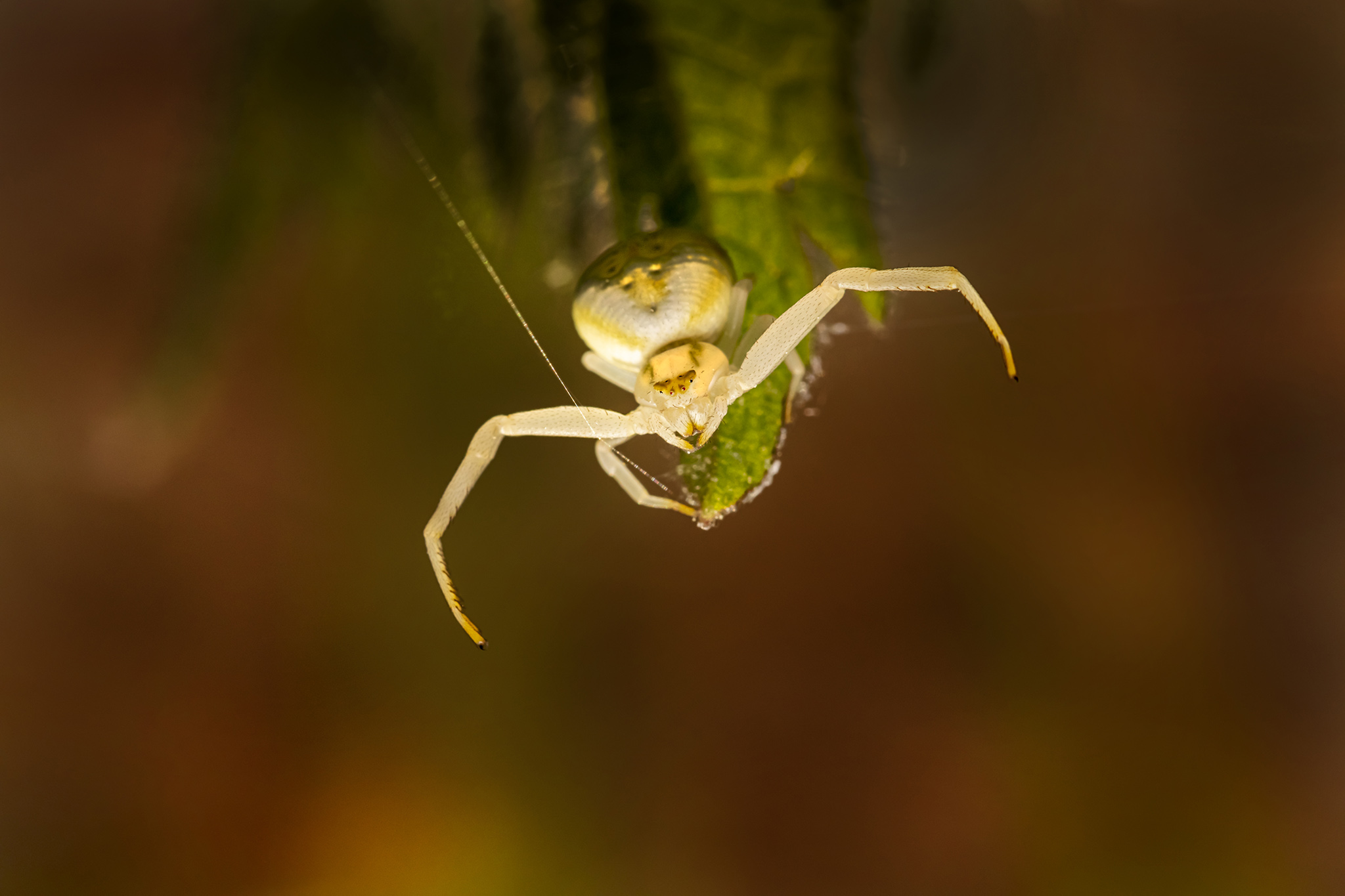Here’s a detailed, factual overview of the Goldenrod Crab Spider (Misumena vatia):
🕷️ Goldenrod Crab Spider (Misumena vatia)
Taxonomy:
- Order: Araneae
- Family: Thomisidae (Crab Spiders)
- Genus: Misumena
- Species: Misumena vatia
🟡 Identification
The Goldenrod Crab Spider is one of Europe’s most recognizable crab spiders, named for its crab-like stance and ability to ambush prey among yellow and white flowers. Females are significantly larger than males, reaching up to 10 mm in body length, while males rarely exceed 5 mm.
The spider is famous for its color-changing ability — females can shift their coloration between white and yellow to match the flower they are sitting on (typically goldenrod, daisies, or buttercups). This adaptation helps it blend perfectly into its hunting environment.
🌼 Habitat and Distribution
Misumena vatia is widespread across Europe, North America, and parts of Asia. It prefers sunny meadows, gardens, and field edges rich in flowering plants where pollinating insects are abundant.
🍯 Behavior and Diet
A true ambush predator, the Goldenrod Crab Spider does not spin webs to catch prey. Instead, it waits motionless on flowers for insects such as bees, butterflies, and flies to approach. Using its powerful front legs, it seizes prey much larger than itself and delivers a venomous bite that quickly immobilizes the victim.
🕸️ Reproduction
After mating, the female constructs a silken egg sac, usually attached to a flower or leaf. She guards it until the spiderlings hatch, after which the young disperse by ballooning — using silk threads to be carried by the wind to new habitats.
⚙️ Special Adaptations
- Color change through pigment migration and light scattering within the cuticle.
- Excellent vision, among the best in spiders, for targeting moving prey.
- Camouflage-based predation strategy unique among common garden spiders.
🌍 Ecological Role
As both predator and prey, Misumena vatia contributes to regulating pollinator populations and serves as food for birds and other insects. Its presence indicates a healthy, flower-rich ecosystem.
📏 Key Facts
- Body length: Female 7–10 mm, Male 3–5 mm
- Color: White to yellow (variable)
- Habitat: Meadows, gardens, and woodland edges
- Range: Europe, North America, and Asia
- Activity: Spring to autumn
Views: 1314
Subscribe to the newsletter:
